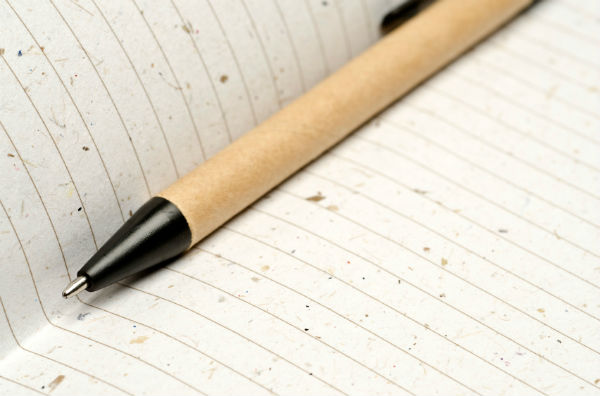
Check your inventory before purchasing anything new.
Everybody likes brand new goodies, but the majority of the staples that children must have at the beginning of each school year are practically the same as the previous year. The only thing that really changes is the way in which manufacturing companies package and design their supplies, ensuring the ongoing cycle of purchasing and purging.
Before you head off to the office supply store or big box retailer this year, dig through your closets to see what basic materials you already have on hand. Chances are pretty good that amid the recycled gift bags and other items that you’ve stashed there for a rainy day, you’ll be able to unearth many of the requisite notebooks, writing implements and other materials itemized on your child’s school list.
Recycle already-used materials.
It’s not uncommon for students to blow through multiple notebooks in the course of a school year, which inevitably leads to the age-old quandary about what to do with their partially used remnants. You know, spiral binders with just 20 out of 150 pages written on, chewed-up pencils that may not be cosmetically pleasing but still have a good two months left in them and erasers that have plenty of bounce remaining despite their haggard Keith Richards appearance. Rather than chucking them in the closest garbage can, give these still-valuable school supplies a sense of renewed purpose instead.
Try adding used notebook pages to your newspaper collection bin and spruce up any battered, mangled covers with strategically placed stickers or artfully applied duct tape (in contrasting colors). The same DIY mentality can be applied to folders, loose-leaf binders and other supplies that are still functional despite their slightly worse-for-the-wear condition. Be sure to enlist your children in this exciting customization project, and if they’re skeptical, keep a big smile plastered on your face while whipping out the items they’ll need to turn their school supply trash into one-of-a-kind treasures.
Purchase high-quality, durable items that will take a licking but keep on ticking.
With the U.S. economy still putting the crunch on most people’s wallets, it can be incredibly tempting to fulfill your child’s back-to-school supply list by buying the absolute cheapest materials possible. But, when they come home from school 35 days later with a folder that looks like it has been regurgitated by a small songbird, you might rue the day you were ever motivated by the lowest price tag.
If at all possible, seek out well-made supplies that will stand the test of time (not to mention the probing and highly destructive fingers of miniature human beings). In the event that this is an entirely cost-prohibitive option, you can always go the cheap route and reinforce your purchases by hand with a little (or a lot of) DIY ingenuity.
Precycle your back-to-school list!
If you have no other choice but to buy new, then commit to purchasing items that are made exclusively with recyclable, planet-friendly materials rather than buying anything made with plastic. Yes, that’s a tall order, especially when it comes to supplies manufactured for the younger set, but it’s not impossible, particularly if you consult the
Back to School Guide to PVC-Free School Supplies.
Many feel that
TerraCycle paved the way for the currently robust eco-friendly school supply market, which is now teeming with diverse green options such as 100% recycled cardboard folders and sugar cane/banana fiber paper and notebooks. Pay attention to labels and channel your hard-earned dollars toward products that help rather than harm our environment. If you do end up buying conventional items, stick with paper-based materials and recycle them when they are obliterated beyond reason!
Host a trade/swap event with parents in your area.
As children mature and move onto the next grade, supplies that were once imperative for their educational experience (such as crayons and glue) are suddenly banished in favor of ho-hum materials such as plain-Jane loose-leaf paper and protractors. The cycle continues on and on until they move out of the house and you’re left with enough odds and ends to open up your own mini Office Max.
Every parent within a 50-mile radius of you will experience a similar dilemma: “What should I do with this pile of __?” whether it’s colored pencils, binders or notebooks. Why spend one solitary penny on new supplies when you can trade no-longer-needed items with fellow parents who happen to have exactly the goods that your child needs? Turn the event into a potluck, and you’ll be the hero, fiscal savior and resident greenie of your entire school district!
